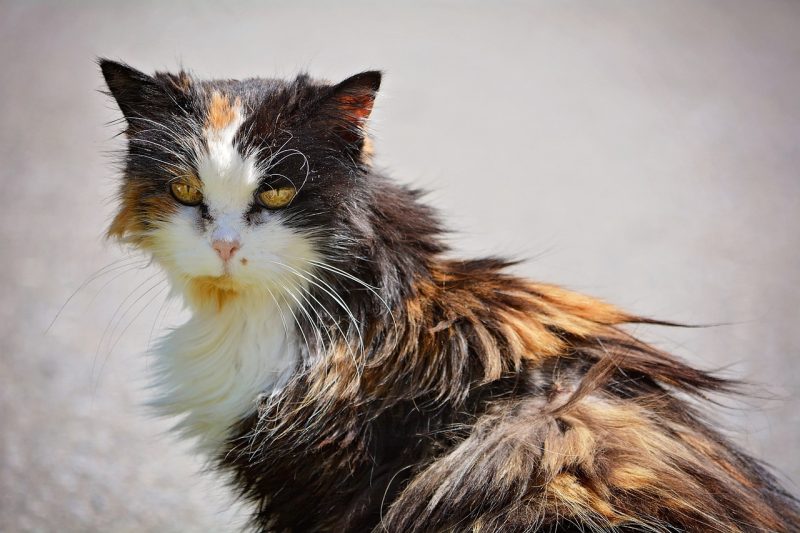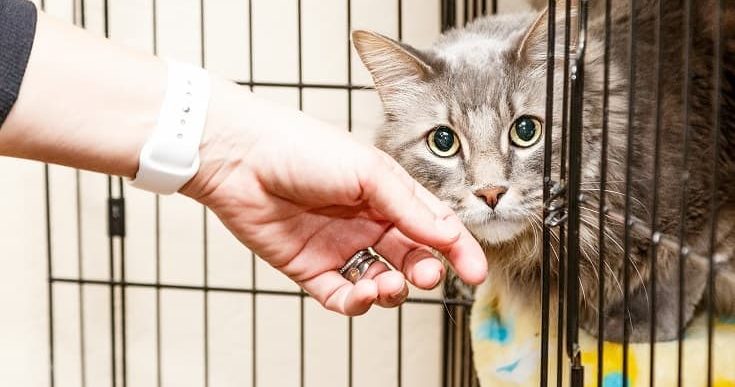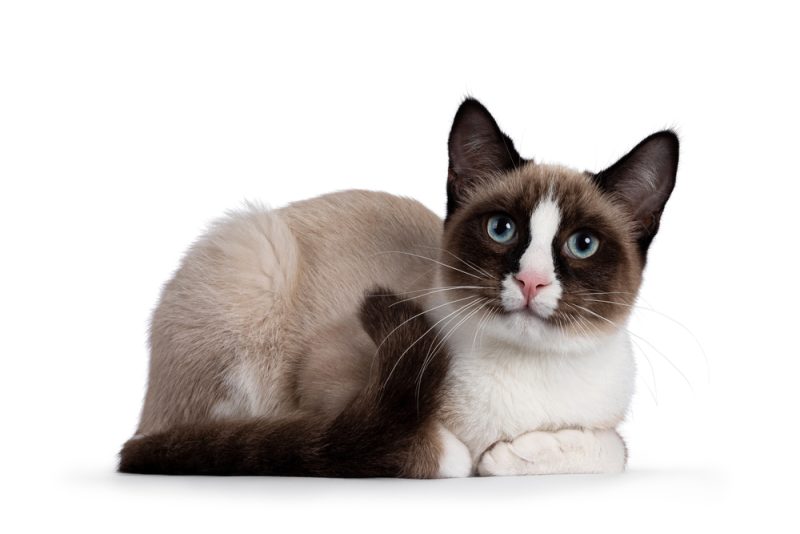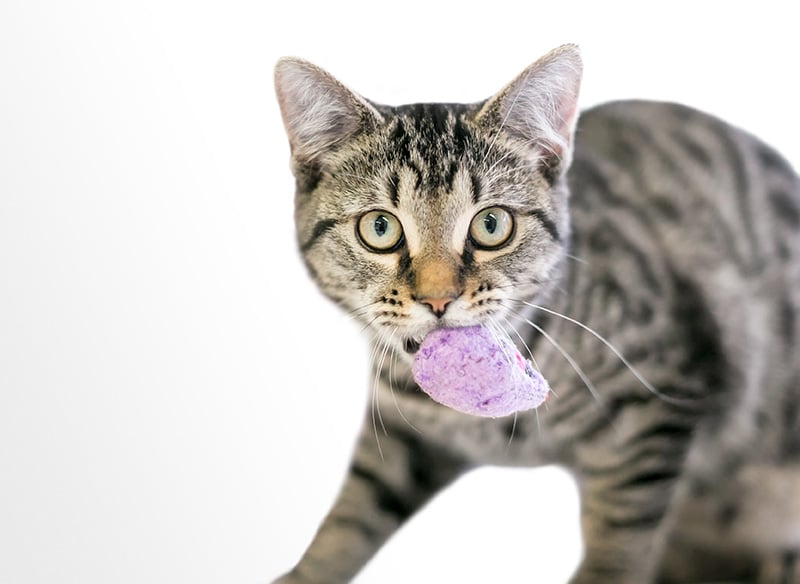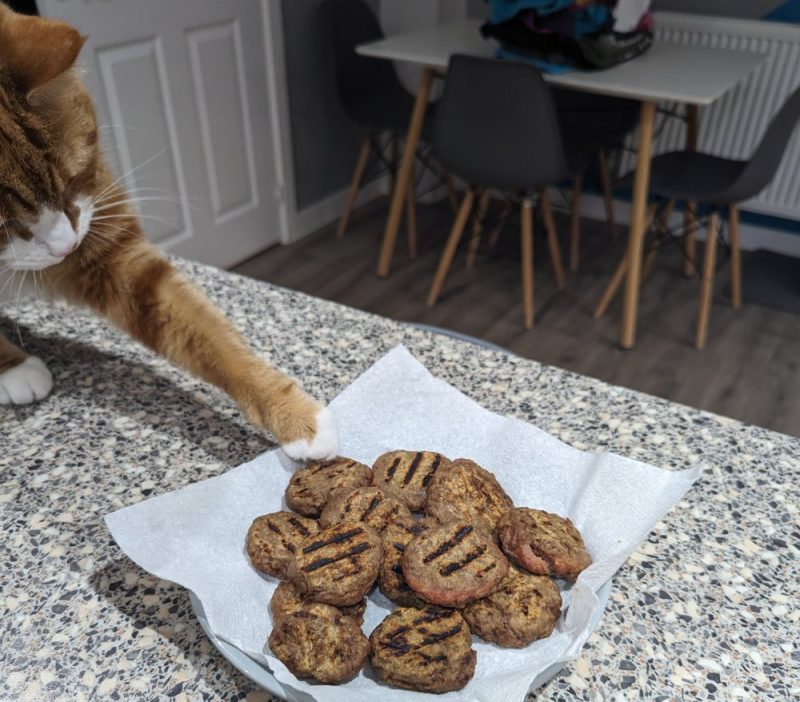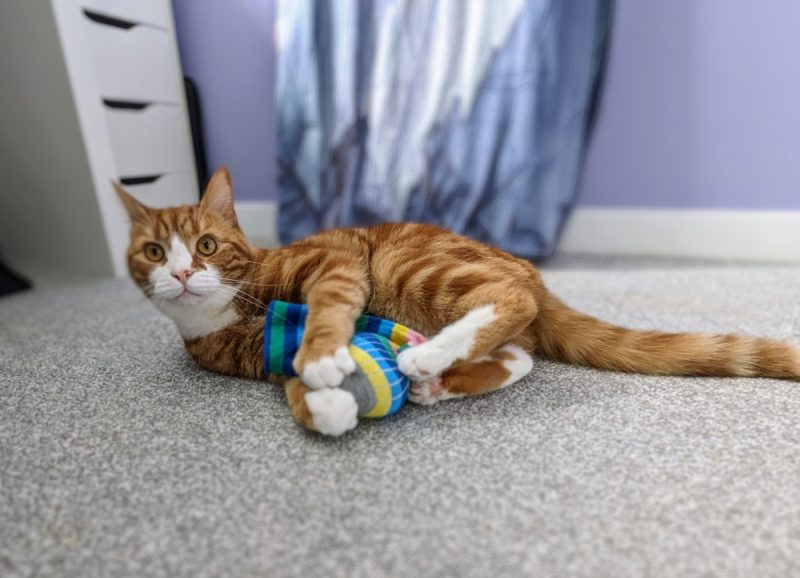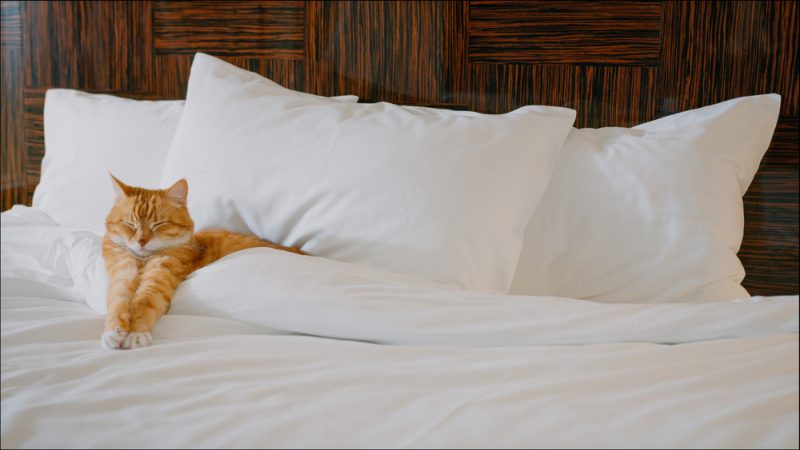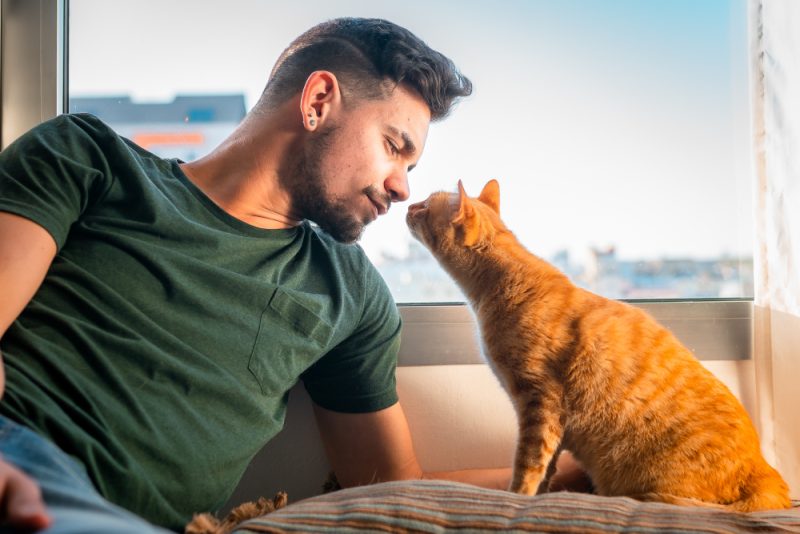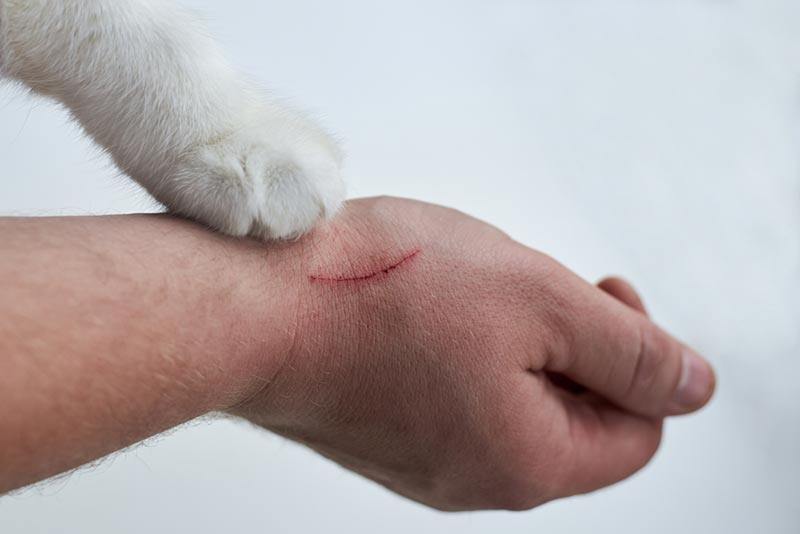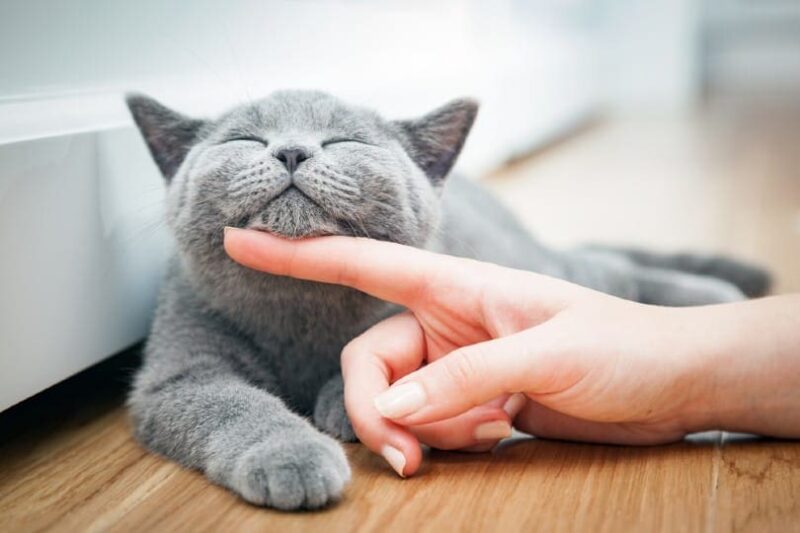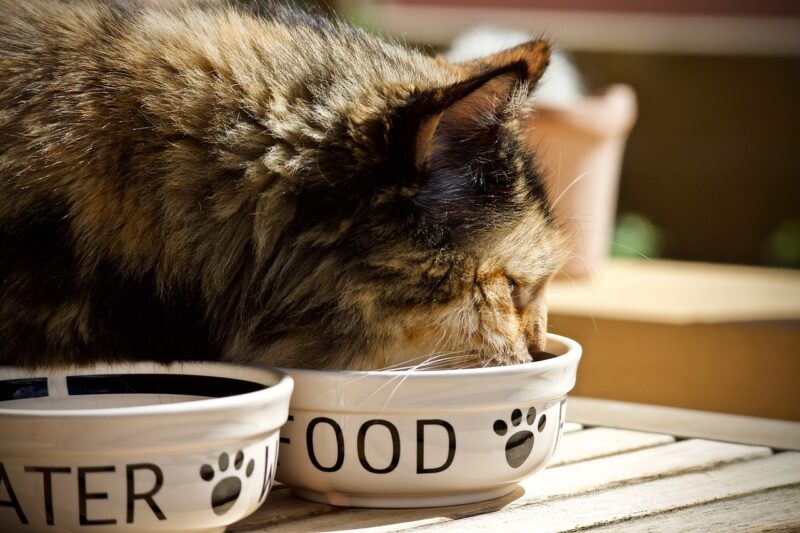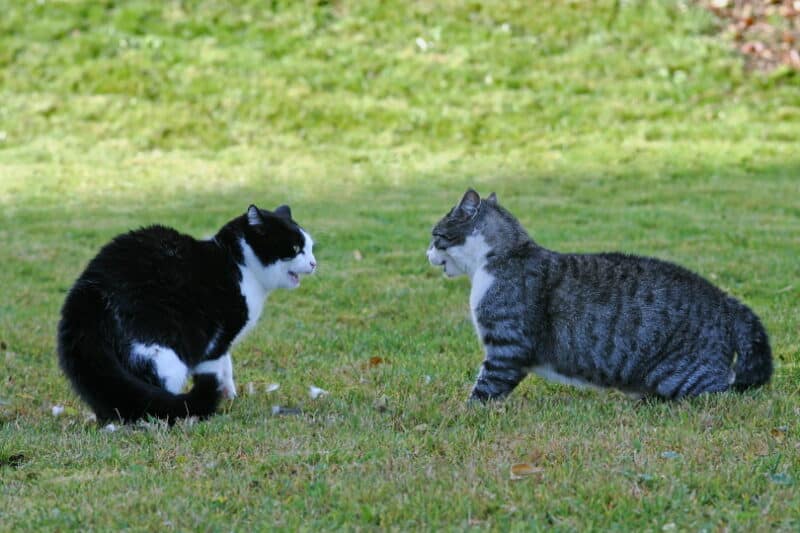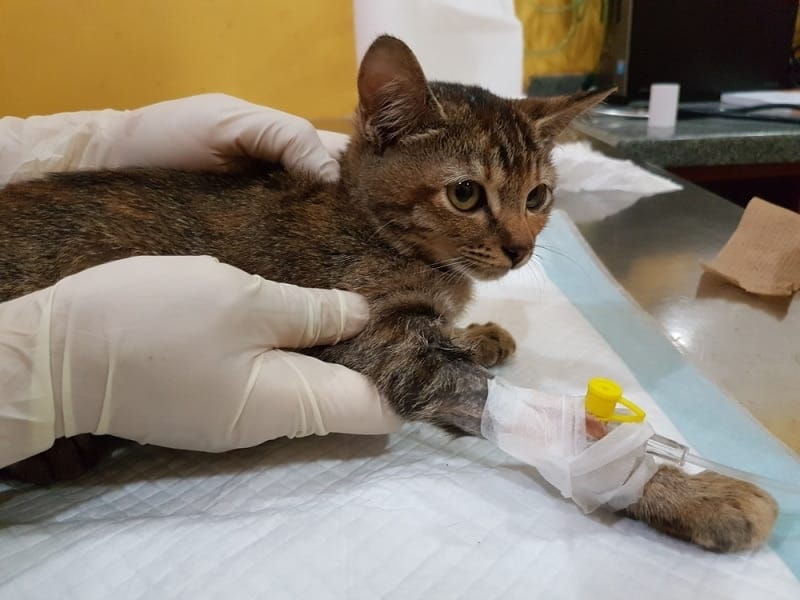In this article
View 2 More +Our feline friends spend a good amount of their time grooming themselves, but even with all that work and attention, they occasionally get mats in their fur. This is especially true when it comes to the back, as matted fur along the spine is fairly common. But why does your cat’s fur get matted on their back?
The fur of a cat’s back can get matted for various reasons, which we’ll look at in detail below. We’ll also share why matted fur is bad for your cat and what you should do to help them, so keep reading!

The 10 Reasons That Your Cat’s Hair is Matted on His Back
1. Difficulty Grooming the Back
For some felines, the issue is that they simply can’t groom their backs very well. After all, the back is a difficult area for any cat to reach, and if there isn’t another cat around to help them groom that area, they can easily develop mats. Difficulty grooming the back is a more significant issue in cats who are overweight, as they may just have too much mass to reach around to get to that part of the body. Matted fur on the back can also be more likely to occur in felines experiencing pain that stops them from bending their spine to reach the back.
If you’ve noticed that your cat seems to be struggling with reaching their back for grooming, ascertain whether they’re showing any signs of being in pain or if they might be a little chunky. Take them to the vet if you believe they’re hurting, and if your cat is overweight, speak to your vet about how to help them shed a few pounds.

2. Age
As cats age, they often lose some flexibility, making it more challenging to reach their back to groom. So, if your cat is getting up there in years, there’s a good chance this is why the fur along their back has gotten matted. While it’s always important to brush your cat (particularly if they have longer fur), it’s vital to do so when your cat reaches an age where they can’t groom as much of themselves due to being less flexible.
- ONE PUSH RELEASE - This kitten brush / cat brush pops out fur with just a simple press, leaving you...
- DURABLE - Cat shedding can be a tough ordeal. Made of resilient ABS plastic and metal bristles with...
- COMFORTABLE - A cat fur brush with 60 degree angled, fine bristles and rubber stoppers will bring...
As your cat ages, they may not be able to groom as well as they used to. The Hepper brush can help make your grooming sessions with your pet easier and more effective, keeping their coat looking and feeling great! Click here to order yours today
At Catster, we’ve admired Hepper for many years and decided to take a controlling ownership interest so that we could benefit from the outstanding designs of this cool cat company!3. Doesn’t Groom Often
Another reason the fur along the back can get matted is that some cats just don’t groom themselves as frequently. While this could be due to your cat being a little lazier than other felines in this area, it could also stem from some kind of oral problem. Dental disease, stomatitis, oral tumors, or a cut or sore in their mouth may make it so they won’t want to groom themselves. If your cat has always been a little lax in the grooming area, it just means you’ll need to brush them more often. But if your cat formerly enjoyed grooming but doesn’t groom often now, it could be due to an issue with their mouth.
Oral problems aside, a cat that isn’t feeling well for any reason may not groom themselves as much. So, if your kitty is showing any signs of illness, such as not eating, a change in behavior or litter box habits, a change in water consumption, or anything else that seems off, see your vet.

4. Friction
Cats are constantly rubbing up against stuff—your legs, furniture, blankets, cat trees, and more. All that rubbing against things equals friction, which can make it more likely for fur to get knotted, tangled, and matted. So, if your kitty is fond of rubbing their back on things or enjoys rolling around on carpets, this could be why the fur is matted on their back.
5. Long Hair
Cats with long hair are gorgeous, but all that hair makes them more likely to develop mats. Whether they just have an overabundance of fur or a thick undercoat, longhaired feline breeds are more prone to mats, which could show up on their backs. If you have a longhaired feline, it’s vital that you brush them regularly to prevent mats from happening!

6. Shedding
All cats shed. However, if a cat’s loose hair isn’t regularly removed from the rest of their haircoat, it can increase the chances of matting. Again, this is especially true for longhaired kitties because their lengthy locks are more apt to tangle.
7. Humidity
Interestingly, humidity can also cause a feline’s hair to mat on the back and in other areas. So, if you live in a particularly humid part of the country or your cat is often outside when humidity hits, this could be causing their mats.

8. Foreign Objects
This reason is likelier for cats who spend time outdoors, but foreign objects can get tangled up in the fur and lead to matting. This could be anything, but the objects most prone to tangling include sticky substances, burrs, and twigs. Of course, foreign objects can get lodged in the hair of indoor felines, too, but if your pet is running around in the backyard, they run a bigger risk of getting something caught in their fur.
9. Skin Conditions
Has your cat been dealing with skin allergies, dermatitis, or another skin condition? If so, this could be why their fur is matted on their back. Skin conditions such as these can cause irritation and itchiness, which lead to excessive licking, scratching, and biting at the affected area. These behaviors can cause fur to become matted if they go on for too long.

10. Stress
It may seem odd to think of our pets getting stressed, but they do. For cats, stress can be caused by significant life changes, such as a new baby in the home, moving, or the death of another pet. If your cat is experiencing stress, they could be grooming excessively or not at all. This could lead to the fur on their back becoming matted. If your feline is stressed, they may also show signs like lack of appetite and frequent hiding. You can try to help your pet with their stress or talk with your vet if it seems like what you’re doing isn’t helping.
If you need to speak with a vet but can't get to one, head over to PangoVet. It's an online service where you can talk to a vet online and get the advice you need for your pet — all at an affordable price!


Why Is Matted Fur Bad for Cats?
A few small mats here and there may not seem like a big deal, but matted fur is often uncomfortable for felines. Plus, if the fur gets incredibly matted or large areas are matted, the mats could cause pain for your pet. Worse than that, mats in a cat’s fur stop the skin underneath the mats from receiving fresh air, so skin can get hot, dry, itchy, flaky, or even infected. And there’s more—matted fur is the perfect place for parasites like fleas and ticks to hide; your cat might have these on them, and you’d never even know.
Keeping your kitty’s fur as mat-free as possible is vital to their health and well-being!

How Can I Help My Cat With Their Mats?
If your cat’s fur is matted on the back, you can help them out a couple of different ways depending on the size and severity of the mats.
If the mats are small, you can use a metal mat comb to try to work them out (gently!) Hold the matted fur close to the skin while you comb with short strokes to decrease pulling on the skin. You may also want to try an oil-based detangler on your pet’s mats.
If mats are large, the comb probably won’t work on them. Instead, you can try pulling them apart (again gently!) with your fingers. If that doesn’t work, the mats will need to be cut out. Unless you’re experienced in grooming, you do not want to cut a mat out yourself. Feline skin is incredibly delicate and can easily be cut or nicked. Instead, take your pet to a groomer or your vet to have mats removed.
And if you want to prevent mats on your cat’s back, brush them regularly! Not only will this make kitty feel better, but it also offers the two of you an excellent opportunity to bond.

Conclusion
Cats can develop mats in the fur on their back for several reasons. This can occur when a cat ages and loses flexibility, has an issue with their mouth, isn’t feeling well, is stressed, and more. You can help prevent mats on your cat’s back by brushing them regularly, but if the cat already has mats, you can try gently detangling them with a comb or your fingers. If this doesn’t work, the mats will need to be cut out.
Featured Image Credit: Pezibear, Pixabay
